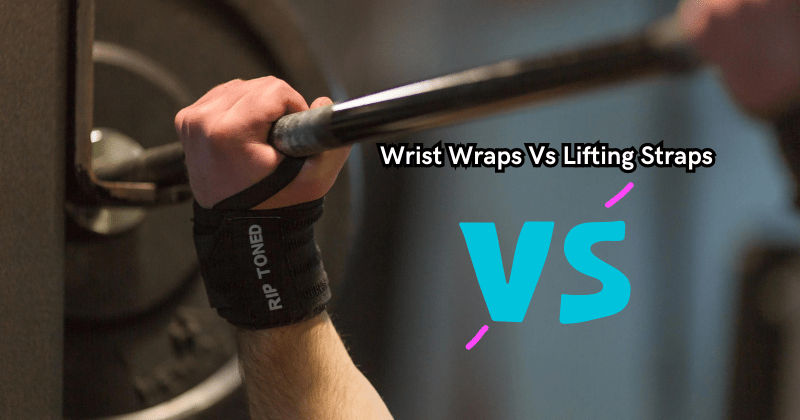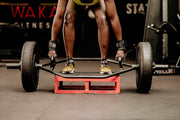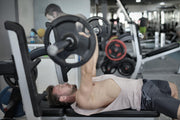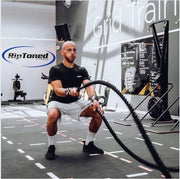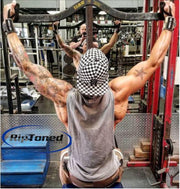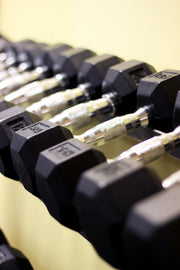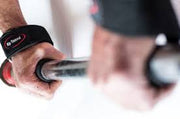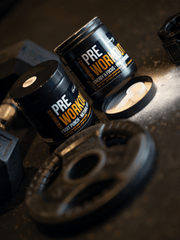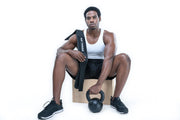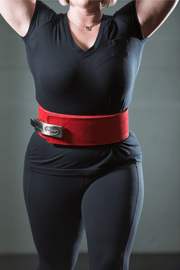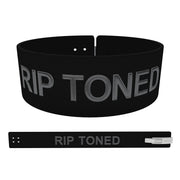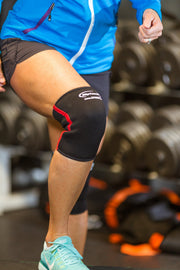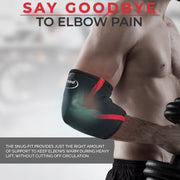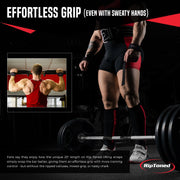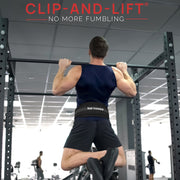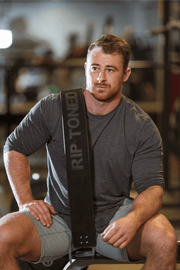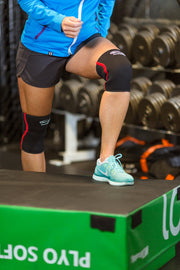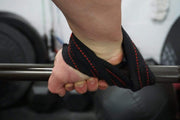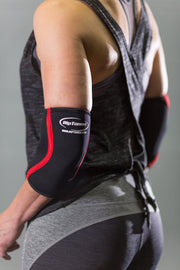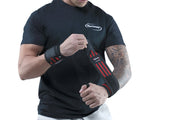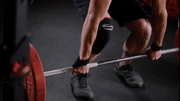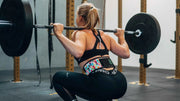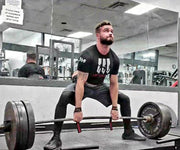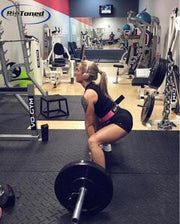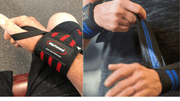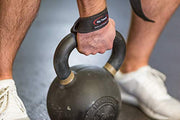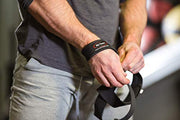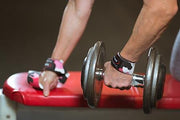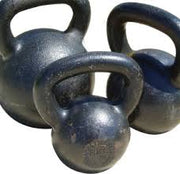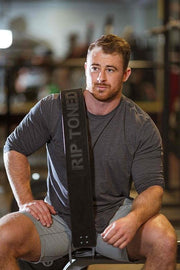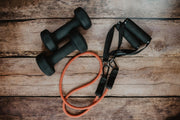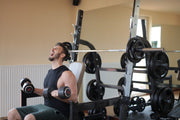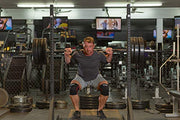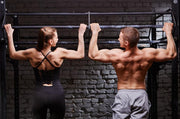Wrist wraps and lifting straps are two popular accessories used by weightlifters, powerlifters, and bodybuilders to improve their training performance. Both serve different purposes and can be used for various exercises in the gym. Wrist wraps provide support and stability to the wrists while lifting straps help with grip strength during heavy lifts.
In this article, we will discuss the differences between wrist wraps and lifting straps, their benefits and limitations, and how to choose the right one for your training needs.
Also, we will explore some common misconceptions about these two accessories and provide tips on how to use them effectively. Whether you are a beginner or an experienced lifter, understanding the differences between wrist wraps and lifting straps can help you elevate your training to the next level.
What Are Wrist Wraps?
Wrist wraps are long strips of fabric or elastic material wrapped around the wrists to provide support and stability. They came into existence in the early 1900s and were originally used by bodybuilders to protect their wrists during heavy weightlifting exercises.
Today, they are commonly used for various strength training exercises such as bench press, overhead press, and deadlifts. Wrist wraps are usually made of cotton, elastic, or a combination of both materials and come in various lengths and widths.
Wrist wraps work by limiting the range of motion in the wrists, preventing them from bending too far back during exercises. This provides extra support for the wrist joints and helps to reduce strain on the tendons and ligaments. As a result, lifters can handle heavier weights and perform more reps without worrying about wrist pain or injury.
However, it is important to note that wrist wraps should not be worn all the time. They are meant to support the wrists during heavy lifts and should be used sparingly. Wearing them too often or for activities that don't require them can actually weaken the muscles in the wrists over time. It is important to listen to your body and only use wrist wraps when necessary.
What Are Lifting Straps?
Lifting straps are also popular accessories used by weightlifters, powerlifters, and bodybuilders. They are made of a strong material such as nylon or leather and have a loop at one end that goes around the wrist. The other end is wrapped around the barbell or dumbbell to provide a better grip.
Lifting straps are commonly used for exercises that involve pulling movements, such as deadlifts, rows, and pull-ups. They work by providing an extra layer of grip on the weight, allowing lifters to hold onto heavier weights for longer periods. This can be especially beneficial for lifters with a weaker grip or during exercises where the grip tends to give out before the targeted muscles.
However, like wrist wraps, lifting straps should also be used sparingly. Relying too much on lifting straps can lead to weaker grip strength and underdeveloped forearm muscles. It is important to train without them occasionally to maintain overall grip strength and avoid becoming dependent on them.
Benefits and Limitations
Both wrist wraps and lifting straps have their own set of benefits and limitations. Wrist wraps provide support and stability to the wrists, allowing lifters to handle heavier weights without worrying about pain or injury. They are also useful for individuals with pre-existing wrist conditions or those recovering from injuries.
On the other hand, lifting straps can help with grip strength and allow lifters to hold heavier weights for longer periods. This can be beneficial for individuals looking to increase their strength and overall muscle development. However, overusing lifting straps can lead to weaker grip strength and underdeveloped forearm muscles.
It is important for lifters to understand the purpose of each accessory and use them appropriately. Wrist wraps should be used sparingly for heavy lifts or when necessary while lifting straps can be incorporated into training routines occasionally to target specific muscle groups.
Difference Between the Wrist Wraps and Lifting Straps
The main difference between wrist wraps and lifting straps is their purpose. Wrist wraps provide support and stability to the wrists while lifting straps help with grip strength during heavy lifts. Additionally, wrist wraps can be worn for various exercises that involve pushing movements, while lifting straps are more commonly used for pulling movements.
Another difference is in their construction and materials. Wrist wraps are usually made of fabric or elastic while lifting straps are typically made of a strong material such as nylon or leather.
When it comes to usage, wrist wraps should be worn sparingly during heavy lifts, while lifting straps can be incorporated into training routines occasionally for specific exercises.
Plus, wrist wraps are generally used for longer periods during a workout, while lifting straps are only used when needed for specific exercises.
It is also important to note that wrist wraps can be worn on both wrists at the same time, while lifting straps are usually only worn on the one hand.
Factors to Consider when Choosing Wrist Wraps or Lifting Straps
When deciding between wrist wraps and lifting straps, it is important to consider your training goals and needs. If you are looking for extra support and stability during heavy lifts, wrist wraps may be the better option for you. However, if you struggle with grip strength and want help holding onto heavier weights, lifting straps may be more beneficial.
You should also consider any pre-existing wrist conditions or injuries. If you have a weak or injured wrist, wrist wraps can help prevent further strain and injury during lifts.
Additionally, think about the type of exercises you will be performing. Wrist wraps are useful for pushing movements like bench press and overhead press while lifting straps are more commonly used for pulling movements such as deadlifts and rows.
Lastly, it is important to use wrist wraps and lifting straps in moderation and not rely on them too heavily. It is always best to train without any accessories occasionally to maintain overall strength and prevent dependency on these tools.
Also, consider trying out different brands and materials to find the best fit for your needs and preferences. Ultimately, deciding between wrist wraps and lifting straps will depend on your goals and circumstances. So, it is important to carefully consider these factors before making a choice.
Why Proper Form and Technique Are Crucial
While wrist wraps and lifting straps can provide support and assistance during lifts, it is important to remember that they should not be used as a substitute for proper form and technique. In fact, relying too heavily on these accessories can lead to poor form and increase the risk of injury.
Proper form and technique should always be prioritized, especially when lifting heavier weights. This not only ensures that the targeted muscles are being effectively trained but also helps prevent strain and injury to other areas of the body.
Using wrist wraps and lifting straps should not be seen as a shortcut or a way to lift more weight than what you are capable of with proper form. Instead, they should be used as tools to help improve and enhance your training.
To ensure proper form and technique, it is recommended to seek guidance from a certified trainer or coach. They can provide valuable feedback on your lifting techniques and guide you on when and how to incorporate wrist wraps and lifting straps into your training routine.
Plus, regularly incorporating exercises that target grip strength and forearm muscles can also help prevent overreliance on wrist wraps and lifting straps.
Pros and Cons of Using Wrist Wraps and Lifting Straps
Pros of Wrist Wraps:
- Support: Wrist wraps can help stabilize the wrists and prevent strain or injury during heavy lifts.
- Useful for pre-existing conditions: Individuals with weak or injured wrists can benefit from using wrist wraps to protect their joints during training.
- Can be worn for various exercises: Wrist wraps can be used for a variety of pushing movements, making them versatile in training.
Cons of Wrist Wraps:
- Can hinder grip strength development: Overuse of wrist wraps can lead to weaker grip strength and underdevelopment of forearm muscles.
- Not necessary for all exercises: Wrist wraps are only beneficial for certain lifts, so they may not be needed for every training session.
Pros of Lifting Straps:
- Assist with grip strength: Lifting straps can help individuals hold onto heavier weights and target specific muscle groups.
- Can be used for specific exercises: Lifting straps are beneficial for pulling movements like deadlifts and rows, making them useful for targeting back muscles.
- Saves energy: Using lifting straps can help save energy during lifts by taking some of the load off the grip, allowing you to focus on the targeted muscle group.
Cons of Lifting Straps:
- May not be suitable for individuals with wrist injuries: Since lifting straps require a strong grip, they may not be suitable for individuals with weak or injured wrists.
- Can cause dependency: Overuse of lifting straps can lead to a dependency on them during lifts, which can hinder overall strength and performance without them.
By considering the pros and cons of using wrist wraps and lifting straps, you can make an informed decision on which accessory to incorporate into your training routine. Remember to use them in moderation and prioritize proper form and technique for optimal results.
Why Personal Preference Plays a Role
While there are various factors to consider when deciding between wrist wraps and lifting straps, personal preference is also an important factor. Some individuals may feel more comfortable and confident using one over the other and that can have a significant impact on their overall training experience.
For example, some people may prefer added stability from wrist wraps, while others may not like the sensation of their wrists being constricted. Similarly, some individuals may feel more confident using lifting straps for heavy lifts, while others may find them uncomfortable or unnecessary.
Ultimately, what works best for one person may not necessarily work for another. Therefore, it is important to try out different brands and materials to find what suits your personal needs and preferences.
Additionally, personal goals and circumstances can also play a role in the decision between wrist wraps and lifting straps. For instance, individuals recovering from a wrist injury may benefit more from using wrist wraps for support, while others aiming to improve grip strength may prefer using lifting straps sparingly.
Tips for Incorporating Wrist Wraps and Lifting Straps in Your Training
Here are some tips to help you effectively incorporate wrist wraps and lifting straps into your training routine:
- Start light: If you are new to using wrist wraps or lifting straps, start with lighter weights to get used to the feeling and ensure proper form.
- Use in moderation: It is important not to rely too heavily on these accessories and to use them in moderation. This allows for the continued development of grip strength and forearm muscles.
- Remove between sets: To prevent dependency, remove wrist wraps and lifting straps during rest periods so you can still work on grip strength.
- Target weak areas: If you have a specific area that needs extra support or assistance, consider using wrist wraps or lifting straps for those exercises only.
- Switch it up: Don't always use the same accessory for every training session. Switch between wrist wraps and lifting straps to prevent overreliance on one tool.
Remember that wrist wraps and lifting straps should be used to enhance your training, not as a crutch. With proper form, technique, and guidance from a certified trainer or coach, these accessories can help you reach your fitness goals safely and effectively.
FAQs
What is the main purpose of wearing wrist wraps during workouts?
Wrist wraps are designed to provide wrist support and stability, particularly beneficial during pressing exercises that place a significant load on the wrist joint. Compressing the wrist area help in preventing injuries and can also alleviate pain from previous conditions by limiting excessive movement that could further strain the wrist.
How do lifting straps assist in weightlifting, and when should they be used?
Lifting straps are primarily used to enhance grip strength and prevent grip fatigue, allowing you to lift heavier weights than you might manage otherwise. They are most beneficial during pulling exercises, such as deadlifts or rows, where your natural grip may fail before the target muscles are fully worked. By securing the weight to your hands, lifting straps ensure that your workout targets the intended muscle groups without being limited by grip strength.
Can you explain how to wear lifting straps properly for maximum effectiveness?
To wear lifting straps properly, start by sliding your hand through the loop, ensuring the strap lies flat against your wrist. Tighten the loop so it's snug but not overly tight around the wrist. Wrap the free end of the strap around the barbell or dumbbell from underneath, then over the top and under again, creating a secure connection. For lasso lifting straps, ensure the thumb loop is correctly positioned for added security. It's important to wrap the straps tightly enough to secure the weight but not so tight that circulation is cut off or discomfort is caused.
What distinguishes lasso lifting straps from other types of straps, and how do they benefit lifters?
Lasso lifting straps feature a loop (or "lasso") that wraps around the wrist and a longer strap around the barbell. This design includes a thumb loop for added security and positioning. The key benefit of lasso wrist straps is their adjustability and the ability to create a very tight, customized fit around the bar. This enhances grip strength significantly, allowing lifters to handle heavy weights with less risk of the bar slipping due to grip fatigue.
Conclusion
In conclusion, wrist wraps and lifting straps can be valuable accessories for strength training. They provide support and assistance in targeted exercises, but it is important to use them in moderation and prioritize proper form and technique. Personal preferences and goals also play a role in deciding which accessory to incorporate into your routine.
With the right approach, these tools can help you reach your fitness goals safely and effectively. Remember to always listen to your body and consult with a professional trainer or coach for guidance on incorporating wrist wraps and lifting straps into your training routine. Happy lifting!

